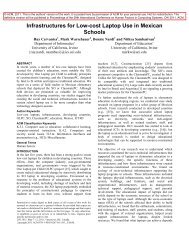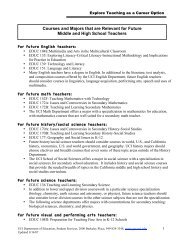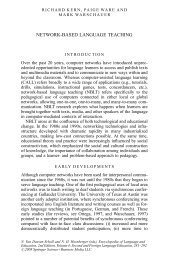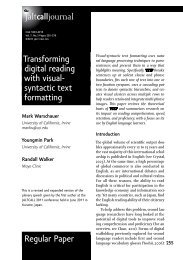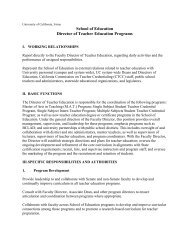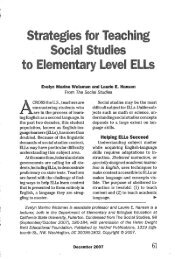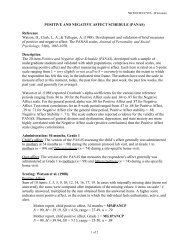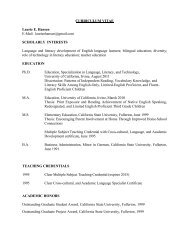A Sense of Proportion: Using perception to ground number symbols
A Sense of Proportion: Using perception to ground number symbols
A Sense of Proportion: Using perception to ground number symbols
You also want an ePaper? Increase the reach of your titles
YUMPU automatically turns print PDFs into web optimized ePapers that Google loves.
Percival G. Matthews<br />
University <strong>of</strong> Notre Dame<br />
This perspective raises questions regarding young children’s apparently logarithmic<br />
performance on <strong>number</strong> line estimation tasks. Why, given that <strong>number</strong> line estimation is a<br />
proportion judgment task, do children’s representations appear <strong>to</strong> be nonlinear in the first place,<br />
when psychophysics – even given a logarithmic underlying representation <strong>of</strong> <strong>number</strong> magnitude<br />
– might predict otherwise One possible answer is that certain assumptions <strong>of</strong> the psychophysics<br />
proportion judgment model may be violated when young children perform <strong>number</strong> line<br />
estimation tasks, impeding their use <strong>of</strong> the default comparison procedure for performing the<br />
tasks.<br />
To judge a proportion, one must know the approximate magnitude <strong>of</strong> the whole (i.e., the<br />
rightmost anchor on a <strong>number</strong> line). Indeed, the proportion judgment model assumes that<br />
participants have access <strong>to</strong> the magnitudes at both ends <strong>of</strong> the line. Although this assumption is<br />
logical when perceptual continua are used <strong>to</strong> indicate the anchors at each end <strong>of</strong> the line (e.g., bar<br />
length on a bar graph, see Spence, 1990), this is not necessarily the case with tasks that require<br />
young children <strong>to</strong> understand the magnitudes <strong>of</strong> symbolic <strong>number</strong>s. Essentially, people who do<br />
not have a correct understanding <strong>of</strong> the values represented by both the high and low anchor<br />
points lack the knowledge needed <strong>to</strong> fully render <strong>number</strong> line estimation tasks as proportion<br />
judgment tasks.<br />
Extant research on children’s abilities <strong>to</strong> identify symbolic <strong>number</strong>s by name provides<br />
some evidence children do lack the symbol knowledge that is assumed by current interpretations<br />
<strong>of</strong> <strong>number</strong> line estimation patterns. For example, young children <strong>of</strong>ten cannot consistently name<br />
symbolic <strong>number</strong>s above twenty, even when they can recite those <strong>number</strong>s as part <strong>of</strong> the count<br />
sequence (Wright, 1991; see also Clarke & Shinn, 2004). One might question whether estimates<br />
12



